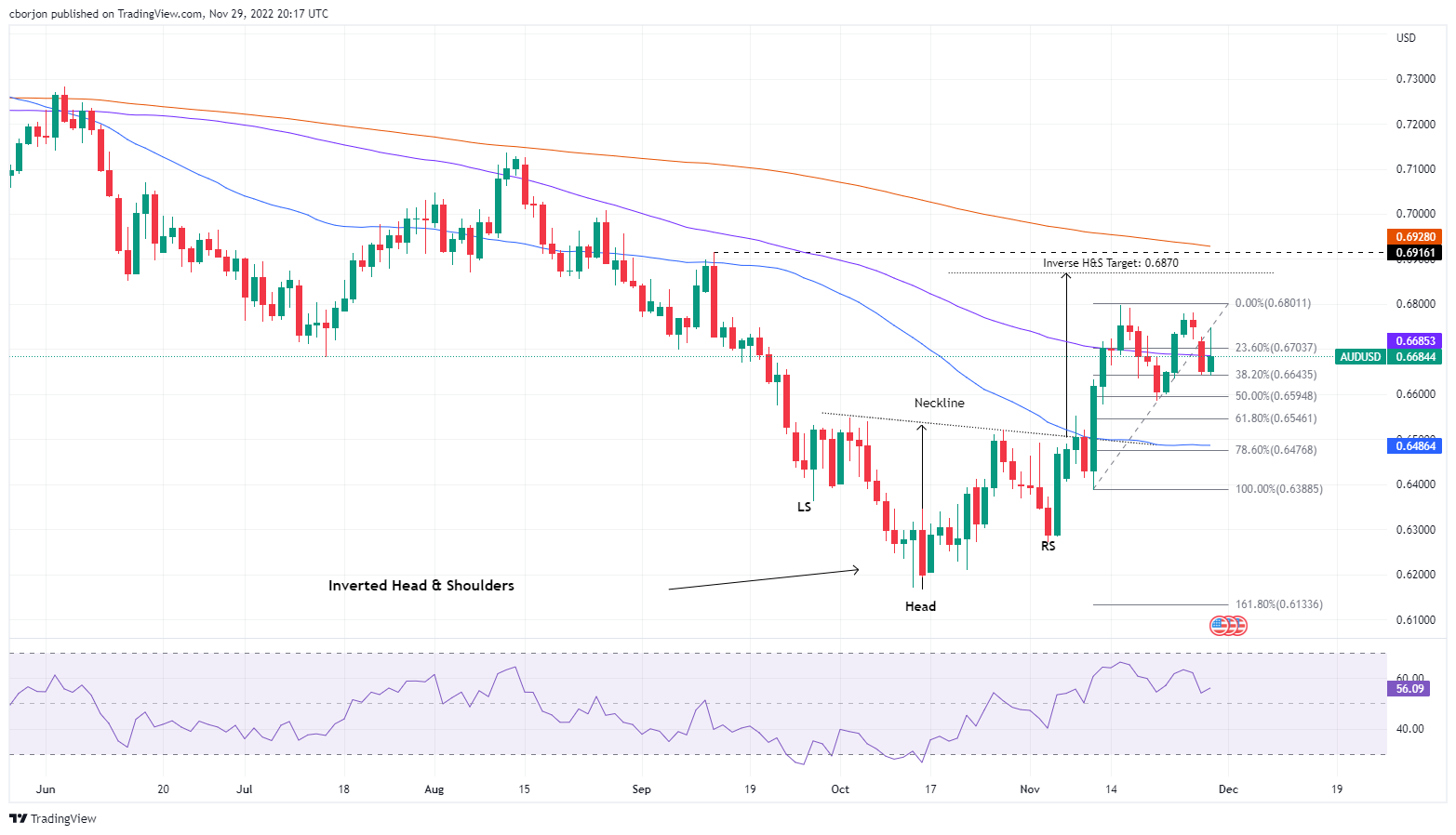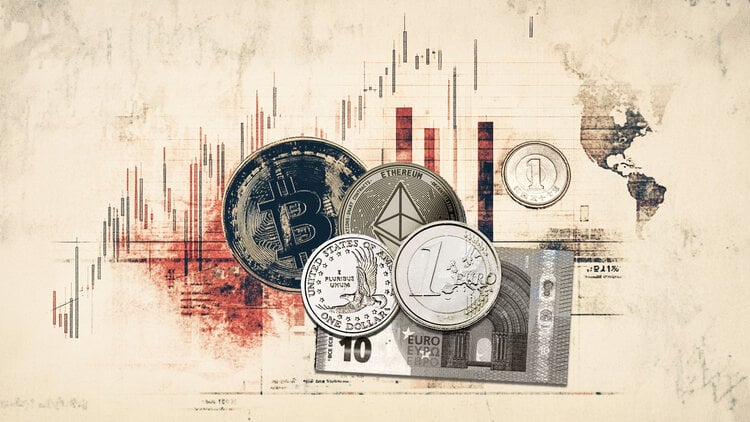- The mixed sentiment was no excuse for the Australian dollar to appreciate against the US dollar.
- Investors continue to value the latest hawkish comments from the Federal Reserve.
- The Fed’s Williams commented that the rate path is higher than the September projections.
- Chinese authorities urged local governments to avoid lockdowns and pledged to vaccinate older adults.
The Australian dollar (AUD) It erases some of Monday’s losses against the US dollar (USD), even as market sentiment deteriorated as Wall Street shows, ending the day lower. The latest comments from Federal Reserve (Fed) officials, the Covid-19 woes in China and weak retail sales data in Australia are the main drivers for the day. At time of writing, AUD/USD is trading at 0.6684, up 0.50%, but far from the day’s high of 0.6748.
Aggressive Fed comments have dampened investor sentiment as Fed Chairman Jerome Powell is in the crosshairs
United States (US) equity markets are reeling from falling mega-cap stocks. Federal Reserve policymakers, led by St. Louis Fed President James Bullard, said the central bank has “ways of going for a tight policy.” Bullard added that the Fed needs to raise rates through 2023 and expects the FFR to peak at 5-7%. New York Fed President John Williams echoed some of his remarks, adding that the strength of the US economy “suggests a slightly higher path for policy relative to September. Not a massive change, but yes something higher”. Williams added that inflation could fall to 5.0-5.5% by the end of 2022 and 3.0-3.5% by the end of 2023.
With the November Minutes of the Federal Reserve’s Open Market Committee (FOMC) opening the door to slowing the pace of borrowing cost rises, Wednesday’s speech by Federal Reserve Chairman Jerome Powell is pending. from the last meeting of 2022.
Consumer confidence in the United States falls to 4-month lows
In terms of data, the US economic calendar revealed that Consumer Confidence or November, reported by the Conference Board (CB), fell to a four-month low of 100.2, weighed down by the combination of inflation and interest rate hikes, posing a challenge for consumers, threatening to slow down economic growth in 2023.
Elsewhere, the Dollar Index (DXY), which measures the value of the greenback against a basket of six currencies, rebounded from daily lows around 106.058 and rose to 106.795, posting modest gains of 0.12%, which which capped AUD/USD gains.
Covid-19 unrest in China subsided, but weak Australian retail sales weighed on AUD
Aside from this, the unrest over the Covid-19 virus in China seemed to subside as cases dropped. On Monday, China reported 38,421 new local cases, down from 40,052 on Sunday, with no deaths for two consecutive days. Health authorities urged local governments to avoid unnecessary and lengthy lockdowns. Chinese health authorities claimed that the Omicron variant is less severe, while pledging to vaccinate the elderly aged 80 and over.
In addition, the weaker-than-expected Australian retail sales report for October put a damper on AUD/USD’s rally on Tuesday. The figures showed that sales fell 0.2% mom against an estimate of 0.5% expansion.
Economic calendar of Australia and the United States
Australia’s economic calendar will include housing data and a speech by Reserve Bank of Australia (RBA) Governor Kearns. In the US, the agenda will be busy with upcoming jobs numbers, GDP, goods trade balance, wholesale inventories, Chicago PMI, pending home sales and the Fed speech, led by the Federal Reserve Chairman Jerome Powell.
AUD/USD Price Analysis: Technical Perspective
AUD/USD continues to have a neutral-bullish bias, although the failure to break above 0.6750 caused the pair to retrace 70 points, returning below 0.6700. Although the inverted head and shoulder pattern is still in play, the candlestick charts on Tuesday touched a sizeable upper wick, which suggests that sellers intervened around the 23.6% Fibonacci level around the 0.6703 level. Therefore, the path of least resistance for AUD/USD in the short term is to the downside.
Key AUD/USD support levels are the 38.2% Fibonacci at 0.6643, followed by 0.0600 and the 61.8% Fibonacci retracement at 0.6546.

Source: Fx Street
I am Joshua Winder, a senior-level journalist and editor at World Stock Market. I specialize in covering news related to the stock market and economic trends. With more than 8 years of experience in this field, I have become an expert in financial reporting.







